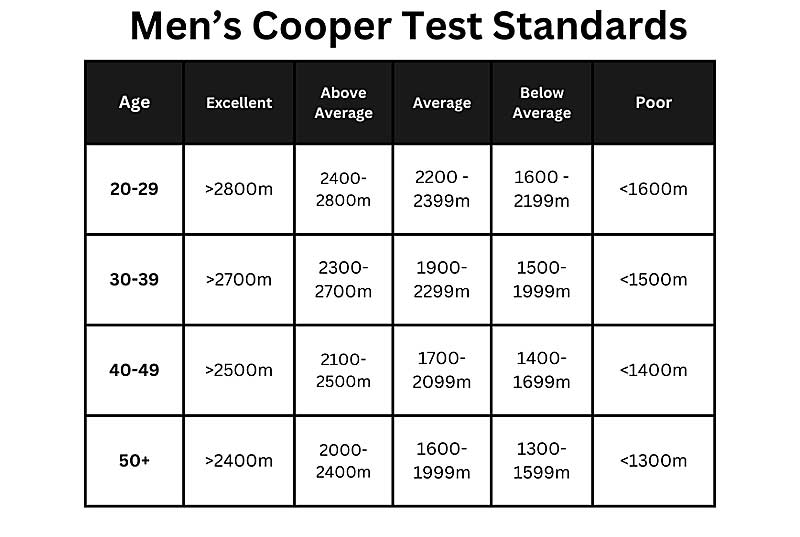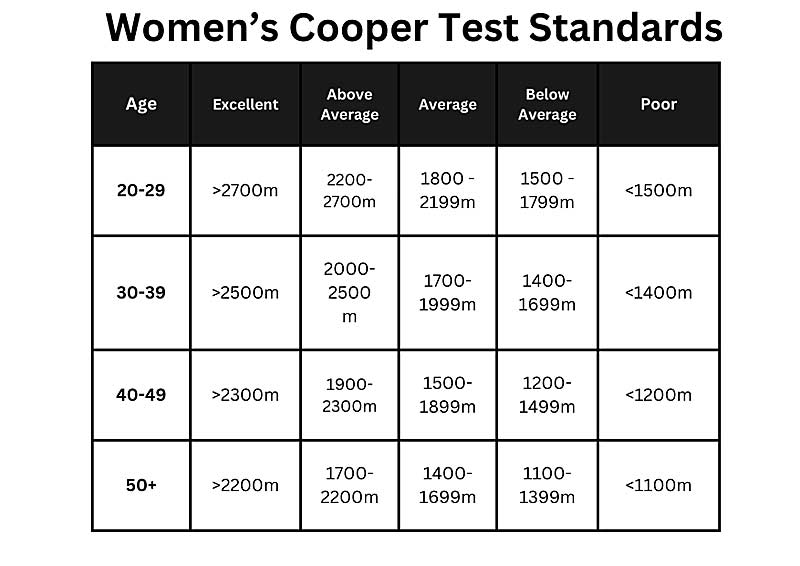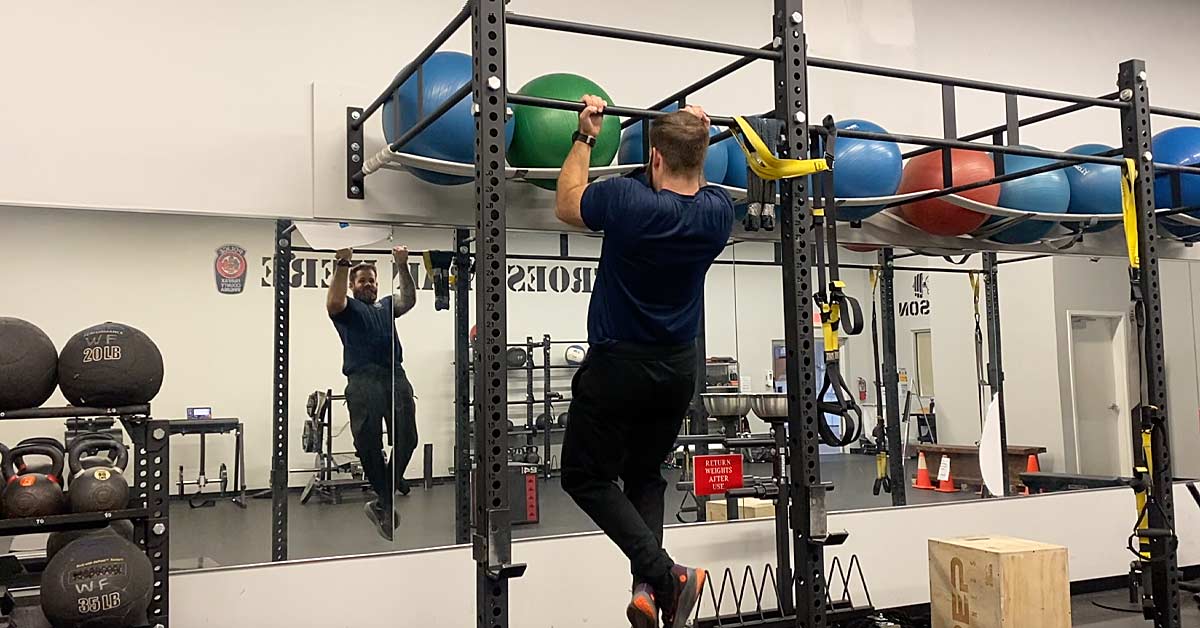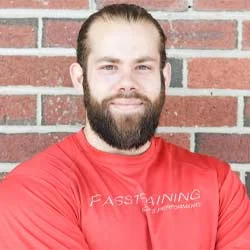Based on their chaotic job demands, law enforcement officers today must be physically well-rounded. It’s impossible to replicate an officer’s exact physical duties, yet having physical standards holds officers accountable for their health and physical capabilities—both of which aid job performance and improve quality of life.
When training and assessing an officer’s physical abilities, it is important to understand much of what we do as strength and conditioning coaches is a small piece of the larger puzzle. They also must train in operational, control tactics, shooting, and a heap of other skills to strengthen their job performance. It may sound similar to your former athletes working on skill development or the game plan, but this holds superior importance due to the potential consequences.
I can confidently say that a fitter law enforcement officer has an increased likelihood of managing stress, reducing overuse injuries, and having an overall positive outlook on their work and life. Share on XWe want our officers to be durable and fit when working the job. I can confidently say that a fitter officer has an increased likelihood of managing stress, reducing overuse injuries, and having an overall positive outlook on their work and life.
Training
Assessments and standards vary from department to department, so there is no universal method for this preparation. This article is also not meant to say what assessments are better than others but rather to look into the preparation for common physical assessments throughout law enforcement.
Officers should follow a balanced strength and conditioning program regardless of the standards. Assessments should be kept in mind and performed in some capacity, but they shouldn’t make up the entire program. Prepare to be ready for a broad base of physical abilities—then, officers will be able to achieve the standards as well as increase their potential to deal with challenges.
A training program should focus on the major movement patterns:
- Push
- Pull
- Squat
- Hinge
- Single leg exercises
- Carries
Performing exercises from these patterns, in some capacity, will help prepare officers for any of the assessments listed below. When paired with consistency—staying ready year-round—there will be little doubt of passing physical standards.
Training officers for their standards isn’t inherently different than training other individuals for their goals. Work backward from the assessment date and establish training markers along the way to monitor progress and adjust when needed. The major difference is creating a program flexible enough to accommodate an officer’s schedule. It’s safe to say the typical shift schedule and lifestyle demands are not optimal for the textbook training program.
Assessments and standards also vary during the stages of an officer’s career. For example, an up-and-coming officer in the police academy will usually have a more structured day, allowing for a better training schedule suited to tracking standards.
Meanwhile, patrol officers working shifts will have more difficulty with routine. Some are not even required to meet any physical standards from their department, a common trend across police departments for multiple reasons. Officers involved in specialty units, such as K-9, SWAT, medics, etc., may have different or additional standards to meet—these units can require specific physical assessments due to the job requirements.
Power Assessments
Law enforcement officers must be prepared for anything and everything. Being capable in one quality—such as being hugely strong—does them no good if they cannot use that due to a mobility or conditioning restriction. This is why there is an array of assessments.
Having the ability to execute power is significant for police officers and could be the deciding factor in a dangerous scenario. A word of caution before you go prescribing intense plyometrics to an unprepared officer—there should be appropriate exercise prescription and implementation. Power has one of the shortest training residual effects, and many officers are not prepared to just “jump” back into an intense program.
Considering the assessments, work them into the training program—perform broad jumps in training if they must perform broad jumps in the assessment. These movements have a technical component, so we want the officer to be comfortable. However, they should still perform various additional jumps and exercises in all planes of movement.
Implementing 10–20 total reps of power-based exercises 2–3 times per week to conclude a warm-up will be sufficient to develop and see progress. The closer you get to the date of the assessment, the more specific the exercise can be to ensure the highest transferability.
Some sample power assessments include:
Broad Jump
The broad jump is a simple power assessment an agency could use. Requiring only a tape measure, it is a low means method to assess for power in the horizontal plane.
Vertical Jump
The vertical jump is the current gold standard exercise for the lower body. A Vertec is commonly used, but I prefer a jump mat or alternative such as the Skyhook Contact Mat, to simplify the testing procedure.
Medicine Ball Throw
An overhead medicine ball throw for distance is a great alternative option if space and equipment allow. The throw requires total body power and is relatively easy to teach.
Muscular Endurance
Assessments for muscular endurance have been performed throughout the years within police agencies. Many of them require no equipment and are a good gauge of relative body strength and fitness levels.
When training for these assessments, the last thing you want to do is perform maximum reps of the exercise every day. These movements should be trained in a structured manner.
Some sample muscular endurance assessments include push-ups, pull-ups, and the elbow plank hold.
Push-Ups
Push-ups are the first exercise that comes to mind with police physical assessments. Some may find them outdated, but there is no denying that they are great screens for relative body strength.
Some may find them to be outdated for physical assessments, but there is no denying that push-ups are a great screen for relative body strength. Share on XTraining for these assessments should be as individualized as possible: an officer who can perform 20–30 push-ups should train differently than an officer who can perform 50+ or even zero push-ups.
- Novice (0–10 reps)
-
- When training individuals who struggle to perform any push-ups, you should take a step back and regress the exercise. Movements such as
- , hand-release push-ups, and assisted push-ups will begin to strengthen the exercise pattern and build confidence.
- Intermediate (11–30 reps)
-
- Cluster sets can be used to train the intermediate officer. These sets break up a larger rep range within smaller groups, allowing for a more efficient workload. This could be done in countless ways, but an example could appear as the following.
A set of 30 reps broken into three cluster sets of 10, with 20 seconds of rest between each cluster.
Perform 10 push-ups, rest for 20 seconds, perform 10 push-ups, rest for 20 seconds, and then finish the set with 10 push-ups, totaling 30 repetitions.
All reps are not equal, and the 30 clustered reps are performed with higher quality than if I told the same officer just to perform 30 push-ups straight.
- Advanced (>30)
-
- The advanced individual may think they are too strong for push-ups, but they are just not progressing them correctly. Like any exercise, we can progress the push-up by increasing the load.
Working in sets of weighted push-ups within the 5–8 rep range to strengthen the exercise will help build a bigger reserve to perform push-ups for additional reps. Especially since many standards must be done within a particular time limit, there’s only so far they’ll go with continuing to just max out their push-ups in a time frame.
There is, of course, a lot of carryover between these three strategies, and they can all be used, depending on the situation.
Pull-Ups
The pull-up, or chin-up, requires a tremendous amount of upper body strength. Pull-ups can follow similar training guidelines as push-ups but be even more flexible, as this exercise is often dreaded in assessments.
- Novice (0–2 )
- These individuals often lack the confidence even to attempt a pull-up; having them fail time after time will do no good. Introducing exercises such as dead hangs, flexed arm hangs, and eccentric focused pull-ups will begin to build the confidence and strength required to progress.
- Intermediate (3–9)
-
- I prefer adding assistance to pull-ups with the intermediate group. I’ve found individuals become too comfortable relying on assistance and are slow to attempt improvement if allowed assistance early on.
When using assistance, ensure officers use the minimum amount required to complete the repetitions.
Cluster sets can also be used to improve pull-ups. Like the push-up example, cluster sets will break up higher rep schemes, so instead of a seemingly impossible set of 10, a cluster set can create a more manageable set of 5/3/2 or even 10×1.
- Advanced ( > 10 )
-
- If able to perform 10+ pull-ups, begin adding load. Even if it is just 5 pounds at first, that is a 5-pound increase. Along with the
- , mixing the modalities listed can keep training fresh and engaging.
Elbow Plank Hold
The elbow plank hold is a good indicator of trunk stability and endurance. Train the elbow plank 1–2 times per week.
If you are starting from ground zero, begin with 2–4 sets of 10-second holds focused on perfect positioning. Each week, gradually increase the time held by 5–10 seconds, working toward the standard time. Some additional exercises that you should include throughout the week are various weighted carries, side planks, and RKC planks to supplement the training.
Strength
Few assessments test for maximal strength in law enforcement physical standards. This is due to the risk versus reward of maxing out an exercise in relation to the average officer, who is in a less-than-ideal situation to do so.
With all that in mind, we don’t see this across many agencies—but that is not to say it is not of value. The hex bar deadlift, which is a total-body exercise, a safer alternative, and graded in relation to the officer’s body weight, is a solid solution and is becoming increasingly more common.
Hex Bar Deadlift (1–3 Rep Max)
When preparing for this assessment, it’s essential to perform and practice the exercise to become technically proficient. I recommend training it once per week, along with supplemental exercises.
It’s essential to train the entire spectrum of reps and loads. Do not just load it up as heavy as possible each week and hope for the best. Work rep ranges from 3–10, being cautious of technical breakdown when you start to creep up on that scale’s higher or lower ranges.
Aerobic
Aerobic capacity may come last, considering job demands, though this quality is necessary for an officer’s physical abilities, general health, and wellness.
Cardiovascular disease and stress are more prevalent in officers in comparison to the average person. Preparing officers for standards is important, but working to combat current health trends with a positive physical culture should be the larger picture.
Increasing aerobic abilities allows officers to better mitigate stress, improve recoverability, and increase cognitive functioning in high-pressure situations.
Increasing aerobic abilities allows officers to better mitigate stress, improve recoverability, and increase cognitive functioning in high-pressure situations. Share on XSome sample aerobic assessments include:
1.5 Mile Run
The mile and a half (or any distanced run, for that matter) must be performed within a specific time frame set by the agency. The first on-track training session doesn’t have to be a test or a timed trial.
It goes for all these assessments, but regardless of how you feel about running, you will have to implement running to prepare for a running assessment. For the sake of exposure and training transferability alone, it is necessary—but it is our job as coaches to ensure sound training principles to limit overuse injuries and aid progress.
If the officer preparing for the assessment is just getting into running, alternating between running and walking is recommended. An example layout would be the following.
-
- Week 1: Run 1/4 mile, walk 1/4 mile x 4.
Week 2: Run 1/2 mile, walk 1/4 mile x 3.
Week 3: Run 3/4 mile, walk 1/4 mile x 2.
Week 4: Run 1 mile, walk 1/2 mile x 1.
Week 5: Run 1 1/2 mile for the assessment marker.
Begin with less and build up to the distance required. You can alter these prescribed distances or the pace of the run for the more seasoned runner. Incorporating shorter, more intense interval sessions in the form of hill sprints, short flat land sprints, or exercise performed on a bike, rower, or ski erg can also aid in training.
Cooper Test
The Cooper Test is an aerobic capacity test in which you run as far as possible within 12 minutes. The assessment can be graded by the total distance covered or by calculating a V02 max off that number. Again, agencies will typically set their own scores, but a standard example would be the following.


When preparing for the assessment, increase distance or time gradually, working as small as 5%–10% increases per week, depending on the length of time until the assessment.
Officers will follow a similar progression as listed above and still incorporate some longer steady-state sessions, whether on the track or on an off-foot option, once per week at minimum.
With the time component, though, they want to be prepared for sustaining work for the entire period. An example of time progression appears as the following:
-
- Week 1: 4 x 3 minutes, full recovery between sets.
Week 2: 3 x 4 minutes, full recovery between sets.
Week 3: 2 x 6 minutes, full recovery between sets.
Week 4: 1 x 12 minutes, full recovery between sets.
The runs should be performed all out, recording the distances achieved, and you can continue to build volume from these four weeks.
PACER
The Progressive Aerobic Cardiovascular Endurance Run (PACER) may bring back memories from childhood gym class. The PACER is another great assessment of aerobic capacity.
Officers should perform the test earlier to not only find a starting score but, more importantly, become familiar with the assessment, listening to commands, the change of direction, etc.
The PACER is different from some of the other aerobic assessments in that the test is concluded when the individual can no longer make it to the 20-meter line in time. So, it prevents the individual from going past the point of no return.
We use the PACER with our police academy and our specialty units. It helps with logistics and not having a track. If performed consistently over time, you can begin to build out your own standards from trends you see with your officers.
Anaerobic
More commonly than not, officers’ job duties will fall under the anaerobic energy system: short bursts of sprinting, jumping, climbing, and other dynamic actions.
Some sample anaerobic assessments include:
300-Meter Shuttle
The 300-meter shuttle is an exhausting test involving a series of sprints intermingled with changes of direction. Preparing for the 300-meter shuttle is of great importance to begin building the officer’s sprinting preparation. Performing repeated sprints in shorter distances of 5–10 yards is a safe introduction and continues building up as time goes on.
There is little need to perform the sprints farther than the test marks, and doing so may even be harmful. If the assessment is performed in 25-yard increments, do not prepare by running 100-yard repeat sprints.
Incorporating at least one session or block per week focusing on the shuttle run should be sufficient in conjunction with the additional training.
Keep in mind that officers will have to pass several of these assessments with conflicting energy systems during the same hour of the day.
Fit for Life
Physical assessments are created to hold law enforcement officers to a higher standard and emphasize the importance of physical readiness for their job. While assessments, standards, and situations may vary throughout the world of policing, a flexible program to accommodate officers is a common requirement.
Educate and train officers to focus on lifestyle and cultural changes in physical and mental wellness rather than becoming fixated on the assessments themselves. Share on XAnother thing that doesn’t vary is educating and training officers to focus on lifestyle and cultural changes in physical and mental wellness rather than becoming fixated on the assessments themselves. It is our job as strength and conditioning professionals to hammer this message home and work to create rational training plans for officers to meet standards as well as build upon the larger picture during and post-career.
Since you’re here…
…we have a small favor to ask. More people are reading SimpliFaster than ever, and each week we bring you compelling content from coaches, sport scientists, and physiotherapists who are devoted to building better athletes. Please take a moment to share the articles on social media, engage the authors with questions and comments below, and link to articles when appropriate if you have a blog or participate on forums of related topics. — SF






